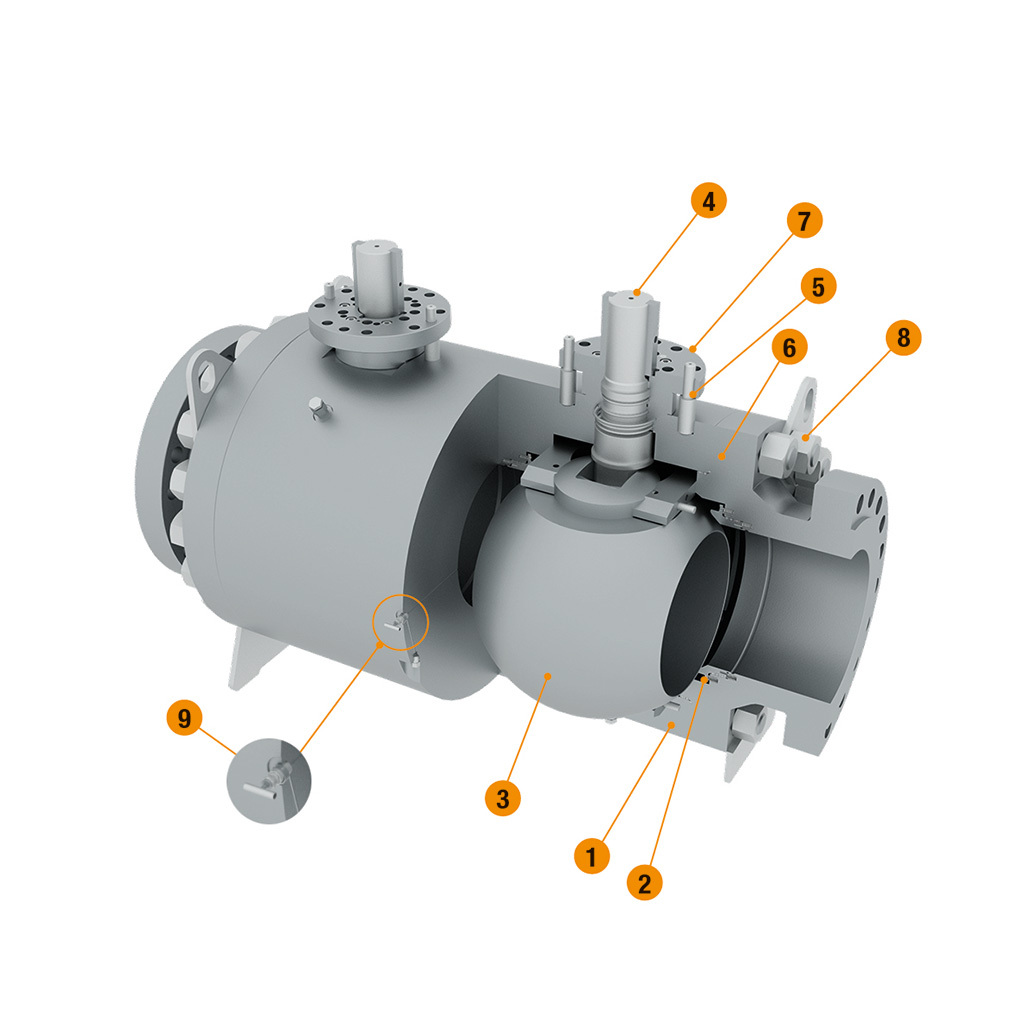BODY
The body is forged in carbon, stainless and other CRA steels commonly used in the O&G industry such as Duplex, Super Duplex and Nickel Alloys. Its design is in compliance with the relevant API and ASME Standards. Threaded plugged connections are provided for the vent and drain functions. The body encases two balls (Block) with a Needle valve (Bleed) in between. The bleed outlet is a plugged ½” NPT connection as a standard.
SEAT RINGS
Floating, renewable metallic rings are supplied as a standard with a soft thermoplastic insert that provides a Zero Leakage seal. Insert material is selected based on valve pressure/temperature design conditions. Springs keep the seats pushed against the ball to ensure a tight seal at low pressure and allow the same to slide back to release any overpressure in the body cavity (Single Piston Effect). In some instances seat rings can be required to effect a double seal – from the line as well as from the body cavity – (Double Piston Effect). In this case a relief valve may be required to release the cavity overpressure. For special services (slurry, presence of solids, high temperature) the soft insert can be replaced by a hard facing with Tungsten or Chrome Carbides Coating (Metal Seated).
BALL
The ball is supported and guided by an external trunnion (sizes ≤ 6” RB) or internal trunnion plates (sizes ≥ 6” FB). It makes a 90° movement from the fully open to the fully closed position driven by the stem connected to a slot in the ball. Its circular opening allows for minimal pressure losses and, in Full Bore execution, for the passage of inspection/cleaning devices (Piggable). In metal seated execution the sealing area of the ball is also coated with Tungsten or Chrome Carbides and lapped with the seats to obtain a tight sealing.
STEM
The stem is designed to comply with relevant API Standard requirements. It is inserted from inside the body through the bonnet and the adapter plate to connect with the operator and its shouldered design ensures that it cannot be ejected by the internal pressure (Anti Blow-Out). It houses the stem sealings, either elastomeric O-Rings or thermoplastic Lip Seals, designed to meet the most stringent Fugitive Emissions requirements. A Graphite ring integrates the set of sealings as a Firesafe barrier.
BONNET
The bonnet is fixed to the body by means of cap screws. Its internal surfaces are the sealing areas of the dynamic stem seals and can be overlayed with CRA to prevent corrosion and ensure sealing continuity over time against aggressive media.
CLOSURES
The closures are bolted to the body by means of fully threaded studs and nuts. They are machined to the specified ends (Flanged, Butt Weld, Hub) for connection to the line. The closures accommodate the springs and the seat rings and, same as the bonnet, can be internally overlayed with CRA in the area of the seat dynamic seals.
ADAPTER PLATE
The adapter plate is the upper flange for connection to the operator, either Gear or any type of Actuator. It is designed and sized in accordance with ISO 5211.
BODY BOLTING
Body studs and nuts are supplied in materials according to ASTM standard and can be coated to any special requirement. The body to closure connection is designed according to ASME VIII Div. 1
BLEEDER
The Bleeder is a Needle valve bonnet assembly connected to the cavity between the two block valves. It performs the function of bleeding the fluid inside the valve through the bleed connection. As a standard it’s a T-Bar operated valve screwed into the valve body. Other options are available like bolted design, OS&Y, Handwheel.
OPTIONALS
Stem and/or Seats Sealant Injection System can be provided upon request

